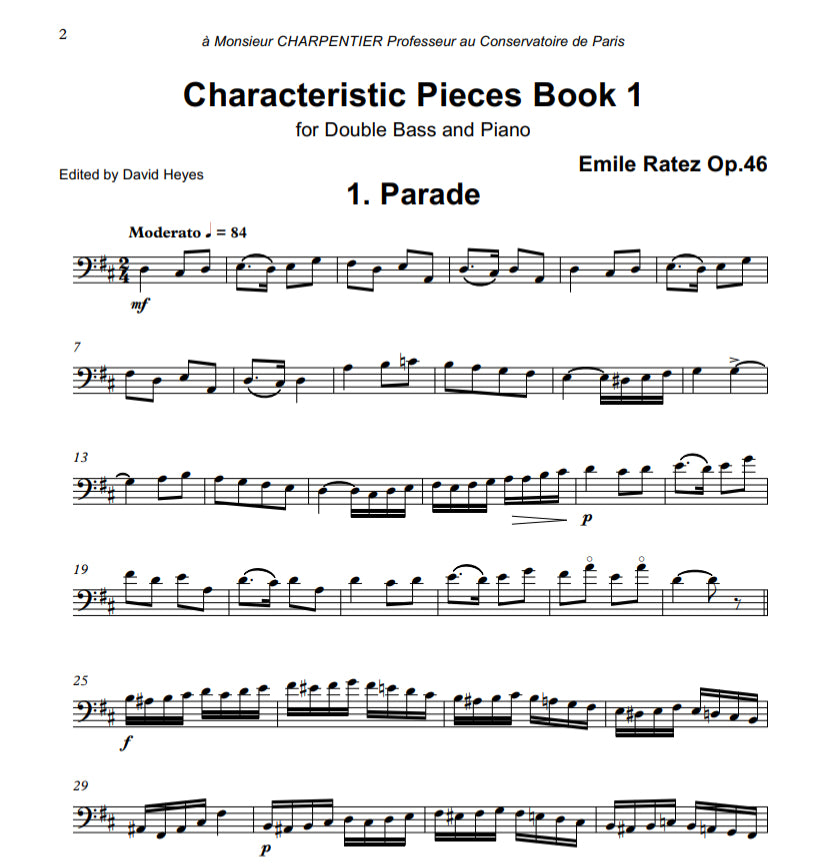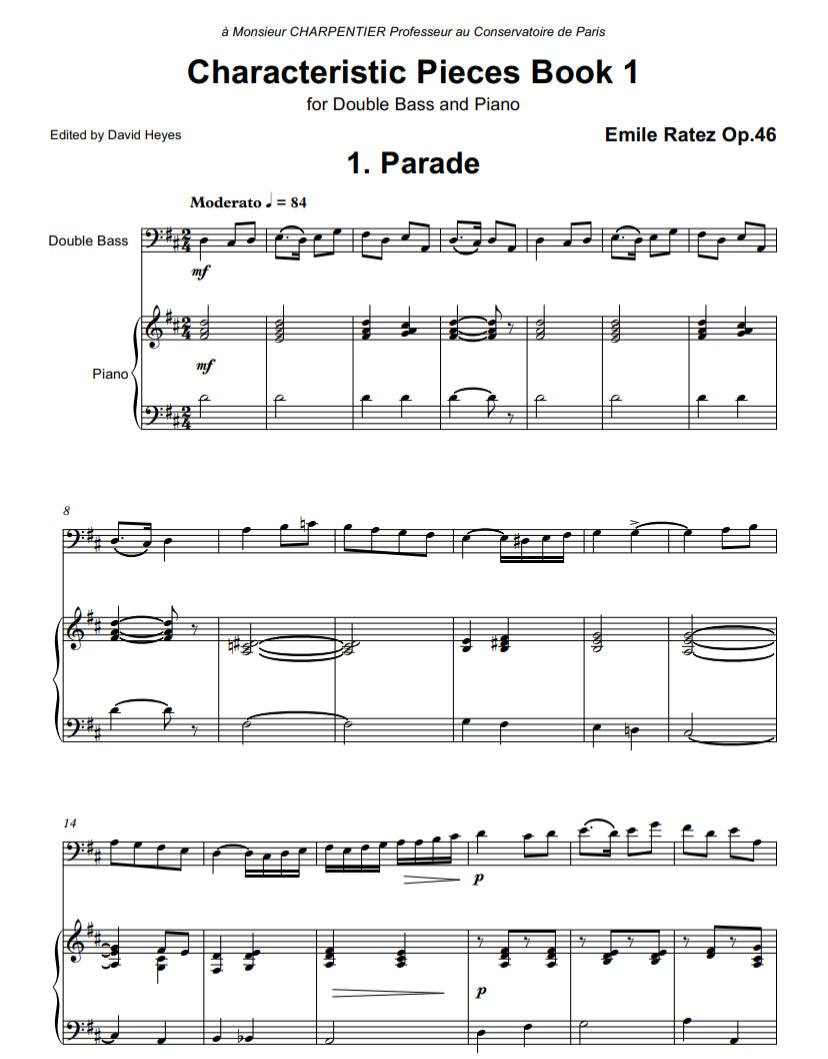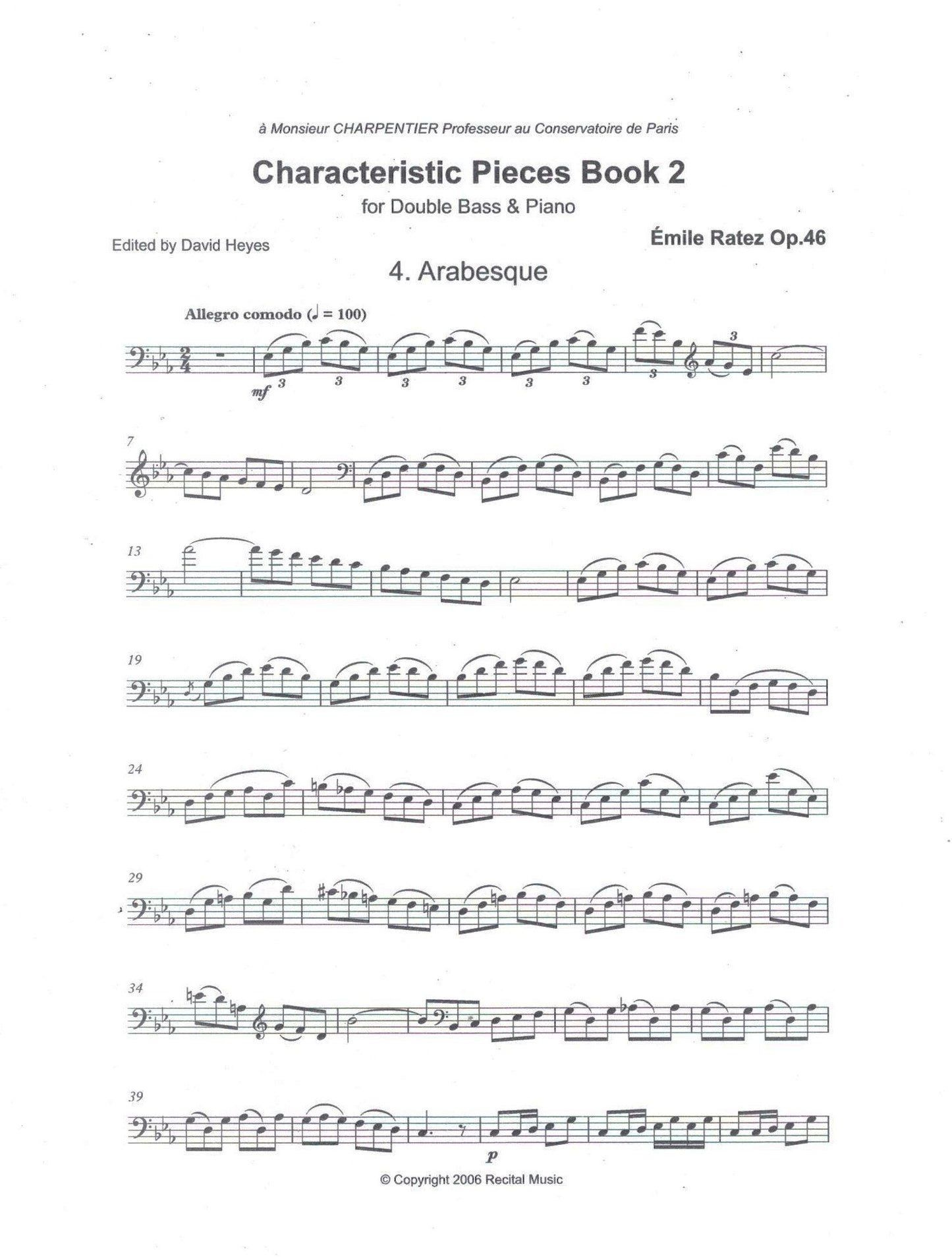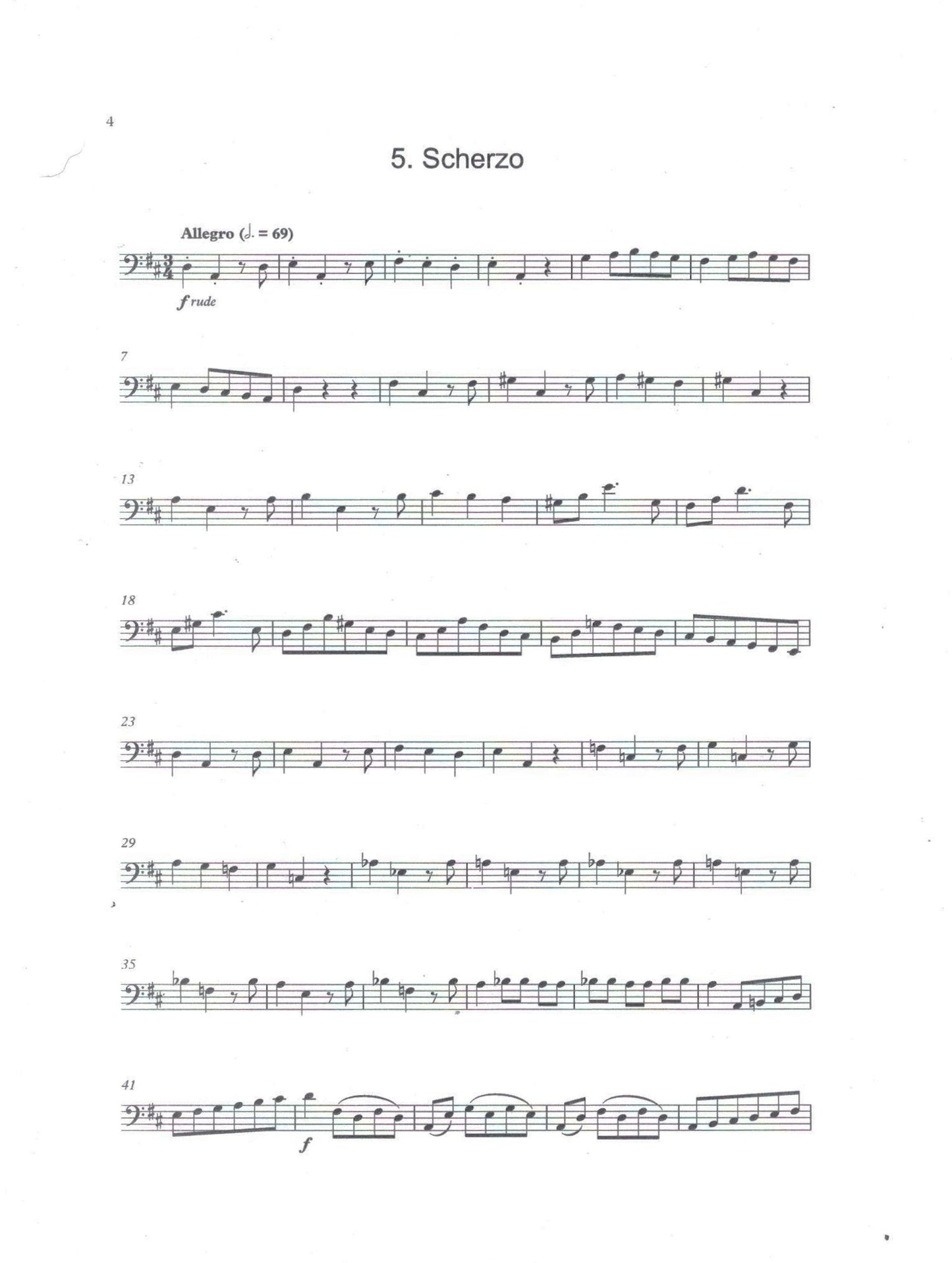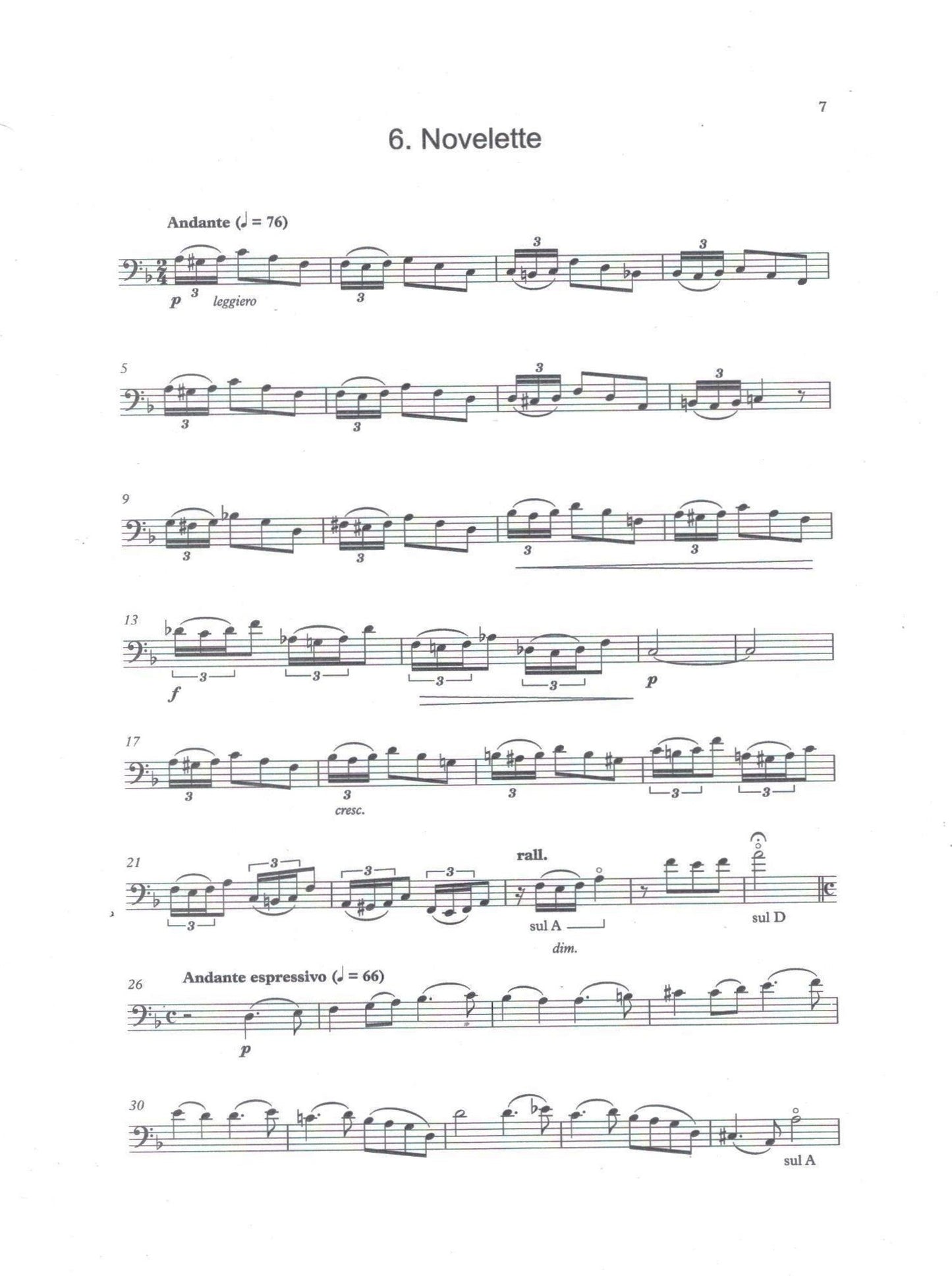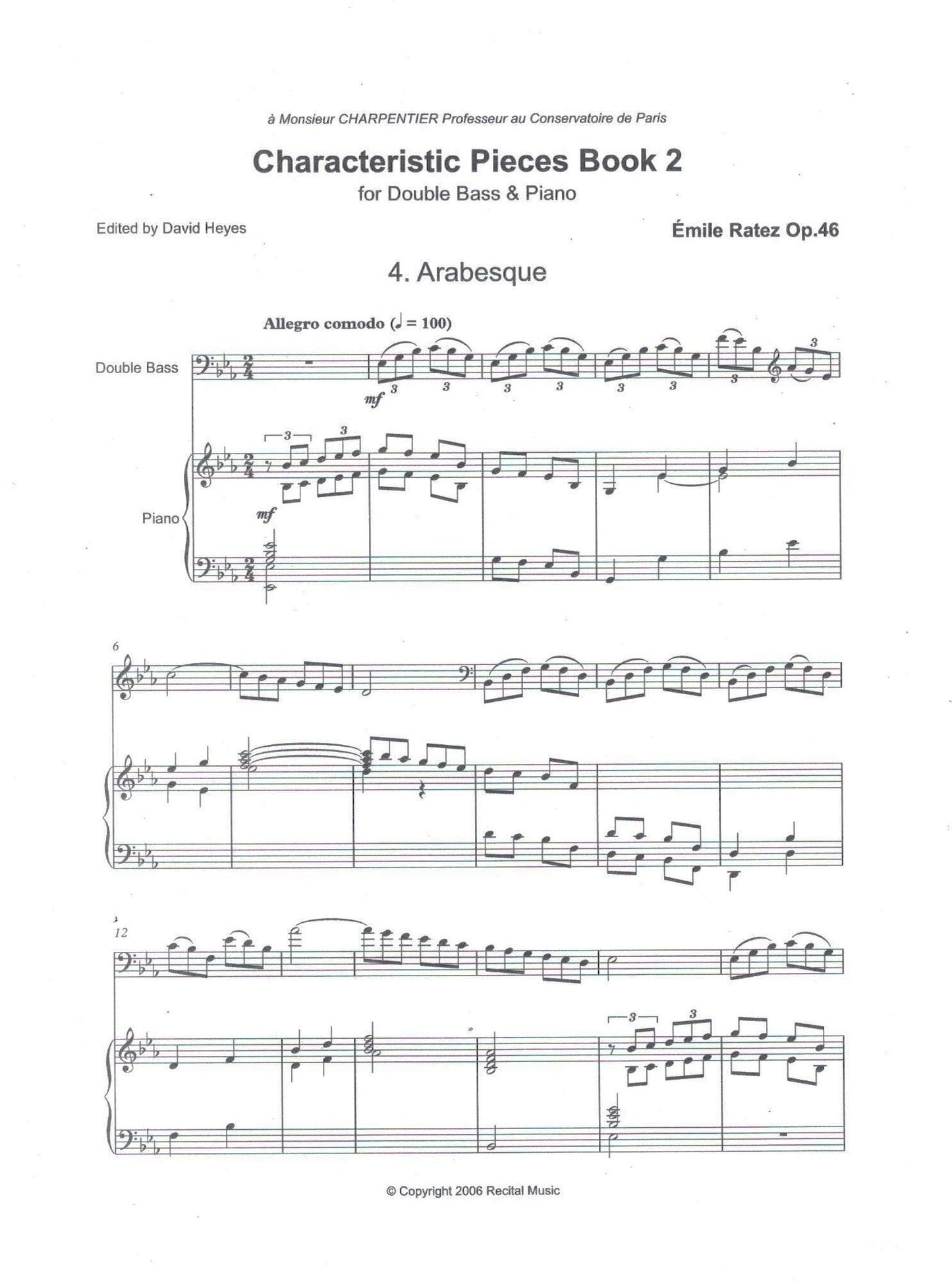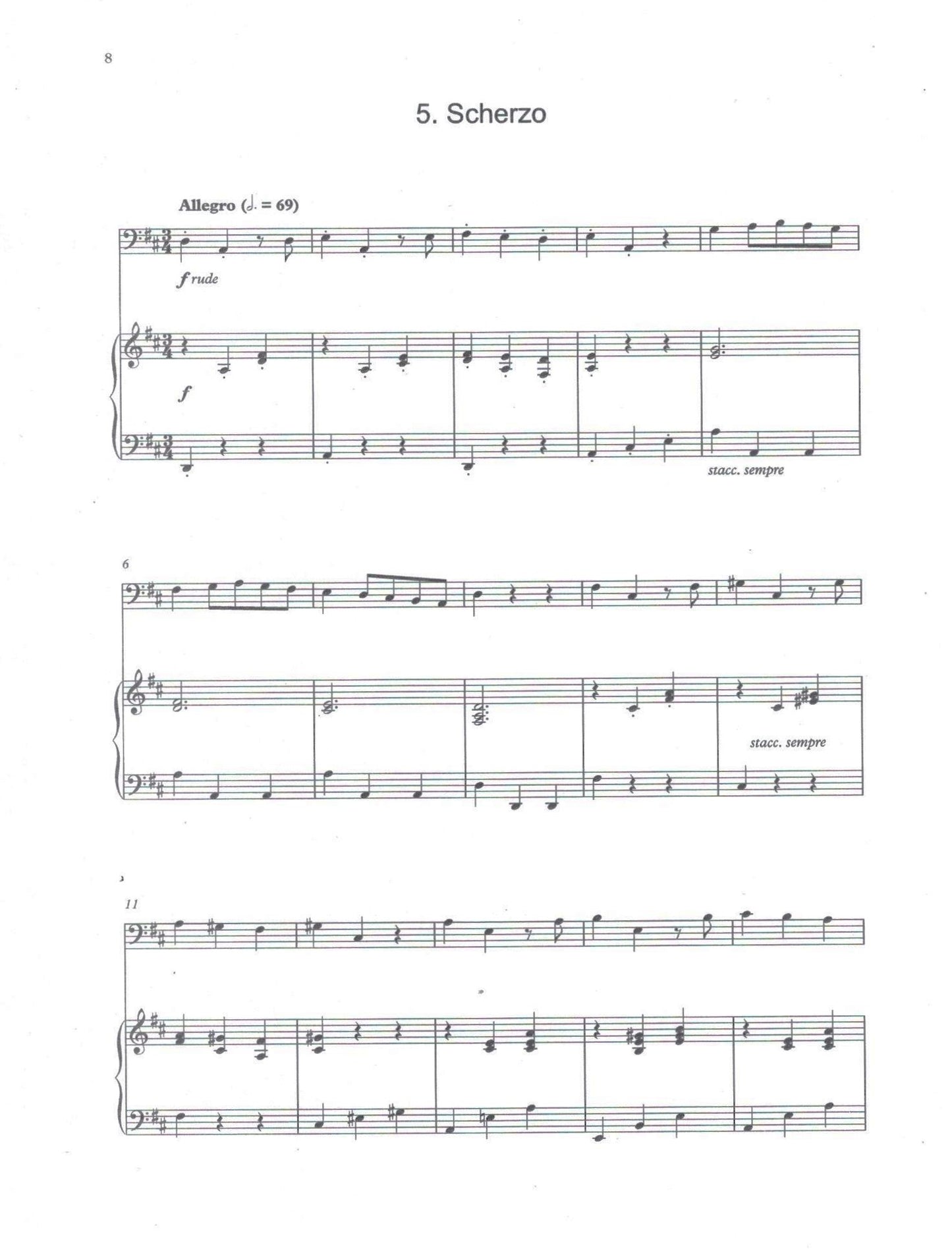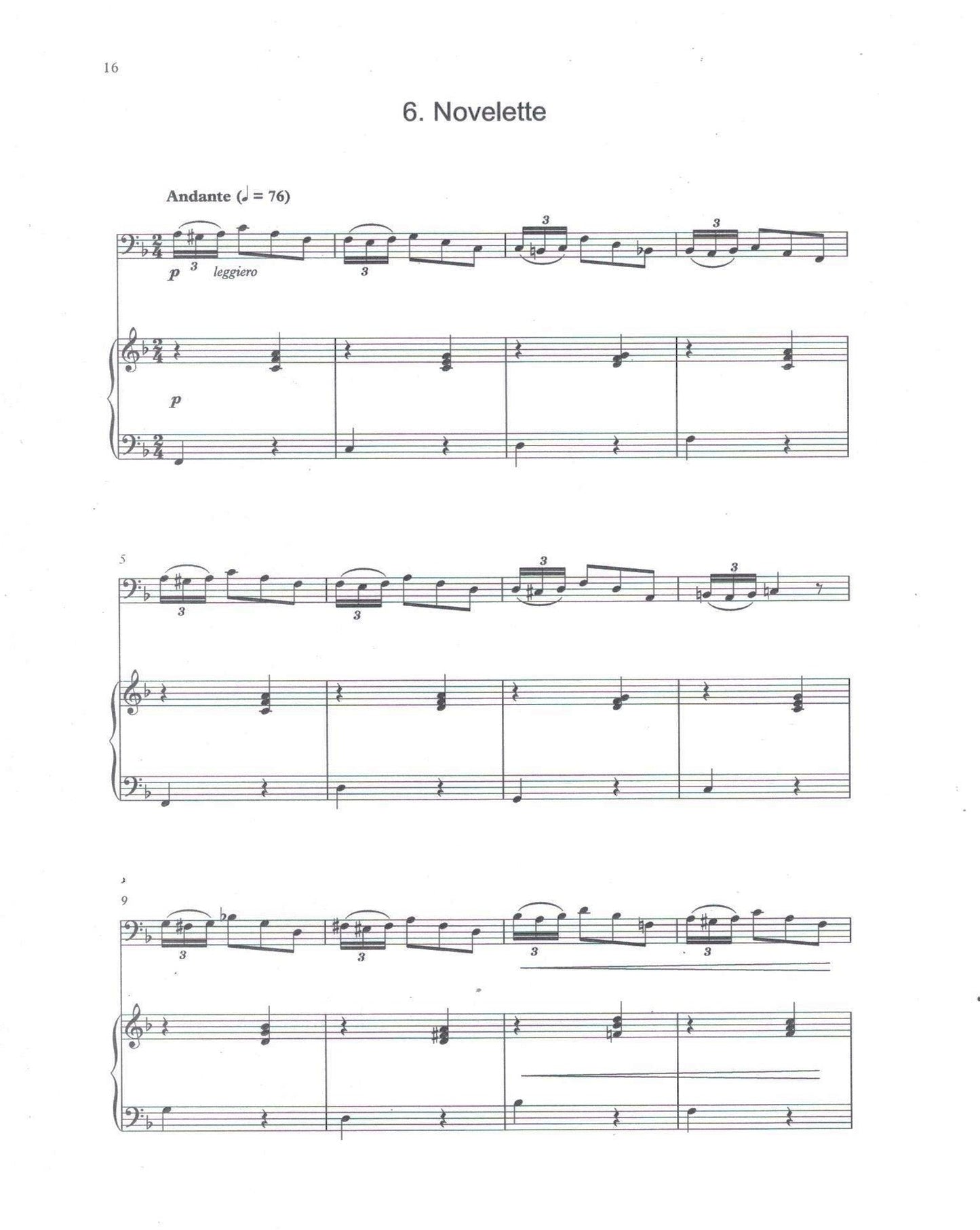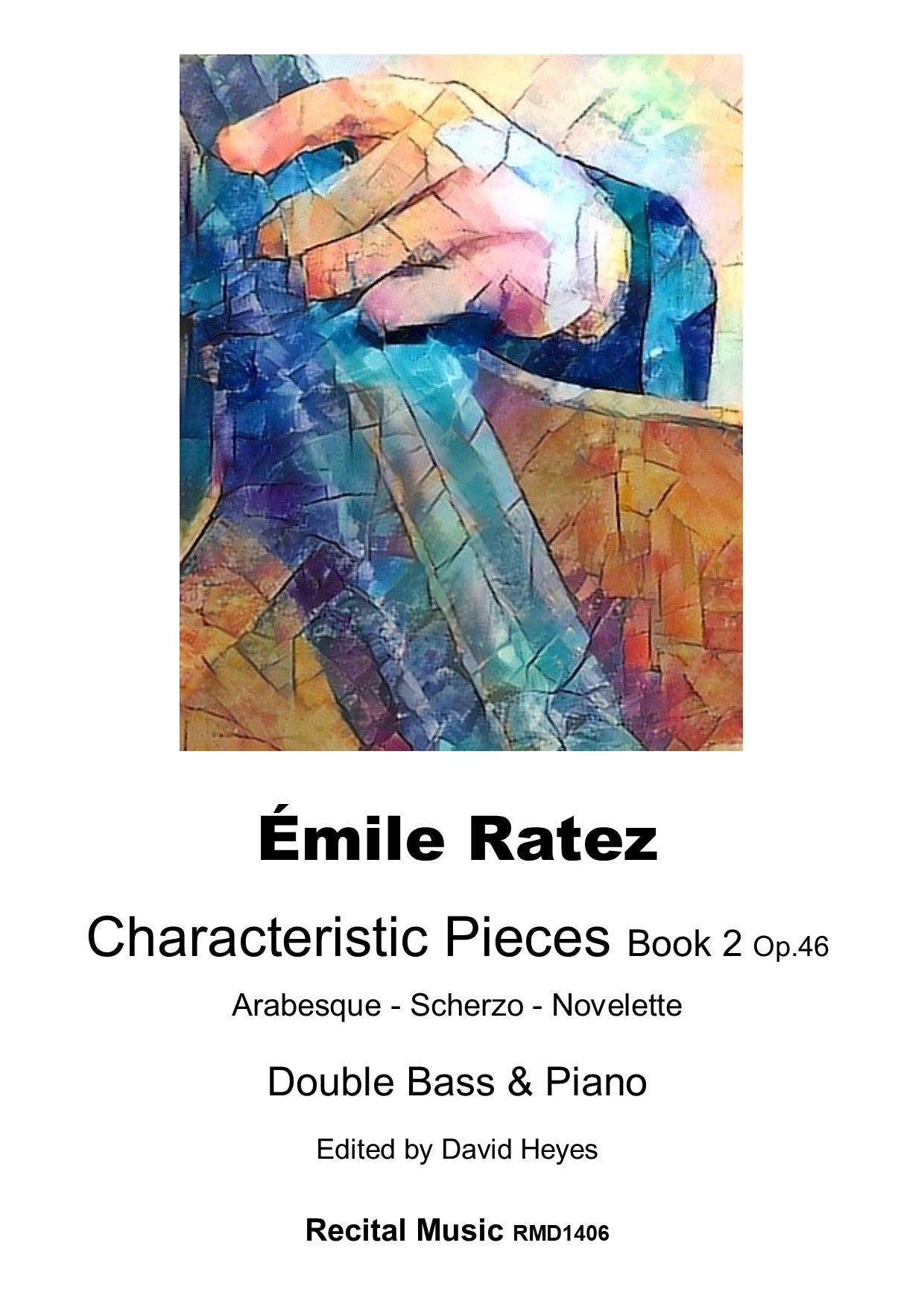David Heyes
Émile Ratez: Characteristic Pieces Book 1 and 2 for double bass & piano
Émile Ratez: Characteristic Pieces Book 1 and 2 for double bass & piano
Couldn't load pickup availability
About Book 1
Composed in France over a century ago, these three engaging pieces are ideal for the intermediate bassist. The style is lyrical, tonal, and approachable, offering interesting study or concert repertoire with lively, supportive, and effective accompaniments. All three pieces remain in bass clef, apart from a few forays into low thumb position in Menuet Varié.
Parade is lively, rhythmic, and fun; Cantabile is melodic and sonorous, offering cantabile and musical challenges in equal measure and Menuet Varié has lyrical and rhythmic contrasts and is the most challenging of the three.
Review of Book 1
"Emile Ratez (1851-1934) penned these three Characteristic Pieces for Monsieur Charpentier, professor of double bass at the Paris Conservatoire, and they are delightful, thoroughly accessible compositions. Considering Ratez's dates, the harmonies are quite fresh and modern-sounding, and although the composer was a violist he has here written music which does indeed consider the characteristics of the double bass…The opening piece, aptly titled 'Parade', is a pleasant, showy number in D major. 'Cantabile' is second in the collection and allows the performer to exhibit their abilities to play lyrically, using the lower half of the bass's range in entirety and to great effect. Finally, 'Menuet Varie', would challenge an intermediate-level player. It begins in E minor marked allegretto scherzando (with hints of the relative major), moves to an E major piu mosso section during which the bassist is required to switch from the soloist to the accompanist role, and finally returns to the key of E minor for a rousing allegro con fuoco…” [DOUBLE BASSIST]
About Book 2
Published in France in 1904, these three lively and engaging pieces are ideal for the intermediate bassist. The style is lyrical, tonal and approachable, offering interesting study or concert repertoire with supportive and effective accompaniments.
Primarily in bass clef, but with some higher passages in thumb position, these are player friendly combining musical and technical challenges in equal measure.
1. Arabesque is rhythmically interesting, contrasting triplets against duplets alongside a second theme that has a strong drive and forward momentum.
2. Scherzo is in ternary form with a beautifully lyrical and sonorous middle section (Cantabile) alongside music which is lively and energetic.
3. Novelette is fun and engaging, using a robust and repetitive rhythmic pattern in the outer sections, with an expressive and sonorous central part taking the bass gradually into low thumb position.
About the Composer
French composer René Émile Ratez was born in Besançon on 5 November 1851 and died in Lille on 19 May 1934. He studied composition at the Paris Conservatoire with Francois Bazin (1816-1878) and Jules Massenet (1842-1912), and subsequently became a viola player in the orchestra of the Opera-Comique and conductor of the Choir at the Concerts du Chatelet.
In 1891 Ratez left Paris for Lille when he was appointed Director of the Lille Conservatoire. His interest in education led to several published theoretical works including 'Traite de contrepoint et de fugue' (1902) and 'Traite d'harmonie theorique et pratique' (1908).
Emile Ratez was a fairly prolific composer, alongside his duties as Director of the Lille Conservatoire, writing pieces for piano, violin, oboe and french horn, songs and choral works, string quartets and five operas - Rase d'amour (1886), Lyderic (1895), Le Bateau ivre (c.1900), Paula (1904) and La Guivre (1925).

